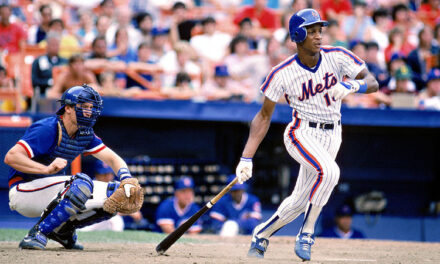
The life of a Major League Baseball player has many impressive benefits, with the big two being wealth and fame. Living out a dream that for many of these men started on local fields, backyards, or watching their favorite players on television is the ultimate testament to hard work and dedication to one’s craft.
A major part of a professional baseball player’s career is the constant travel, be it from the road games during a Major League season, promotions/demotions to the minor leagues, or relocating via trades and signings.
For journeyman relief pitcher Carlos Torres, being on the move is something he’s well accustomed to.
Torres, 37, moved a lot as a kid, as his father Jose searched for work to support his five children in California. He later attended four different colleges before getting drafted in the 15th-round by the Chicago White Sox in the 2004 MLB June Amateur Draft.
After spending several seasons in the minors for the White Sox and pitching in 13 games with the big club between 2009-10, Torres was on the move yet again. This time, Torres would be playing professional baseball outside of the United States, pitching in Japan for the Yomiuri Giants in 2011.
The right-hander came back to the States for the 2012 season, signing with the Colorado Rockies in December 2011. He appeared in 31 games for the Rockies (a then career-high) and recorded more than 3 outs in more than half of his appearances (18).
His tenure with the Rockies lasted just that one season in ’12, as he inked a minor league deal with the New York Mets for the 2013 season. It was with the Mets that Torres would finally find some consistency; appearing in 165 games over three seasons (2013-15), posting a 3.59 ERA with 8.2 strikeouts-per-nine. His best season with the Mets came in 2014, when the then 31-year-old appeared in a career-best 73 games, posting a 3.06 ERA, 11.9 SwStr% and a 46.8 ground ball rate.
Following the Mets’ five-game loss to the Kansas City Royals in the 2015 World Series, Torres was designated for assignment by the club in January. He inked a minor league deal with the Atlanta Braves but opted out right before the start of the 2016 regular season due to a clause he had in his contract that allowed him to leave if he would not make the opening day roster.
It wouldn’t take long for Torres to find work, as the Milwaukee Brewers signed the righty to a one-year, major league deal in early April. After posting a 4.68 ERA in 2015 with the Mets, Torres nearly cut that down by two runs in ’16 with the Brewers: posting a career-best 2.73 ERA. Torres also saw his K% increase over three percent from the following season (19.8 to 23.0 percent) and led all Milwaukee pitchers in appearances (72).
With the Brewers in ’16, Torres increased his four-seam fastball usage by nearly 14.0 percent from 2015 (39.4 to 53.2 percent), and saw improvements in his wOBA (.365 to .268), average exit velocity (88.2 to 85.9 m.p.h.), average spin rate (2240 to 2330 rpm) and whiff rate (18.2 to 23.2 percent). Torres saw marked differences in his four-seam fastball against left-handed hitters that year, as he saw his wOBA drop by more than 250 points from ’15 (.531 to .279), hard-hit percentage drop more than 13 percent (40.0 to 26.9) and his whiff rate increase by more than eight percent (13.7 to 21.8).
Comparing pitch location between seasons, Torres certainly pitched more low and inside to lefty hitters in 2016 (left image) than in 2015 (right).
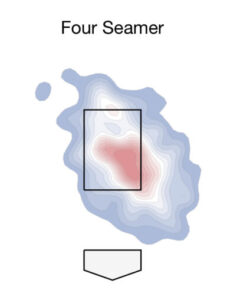
Baseball Savant
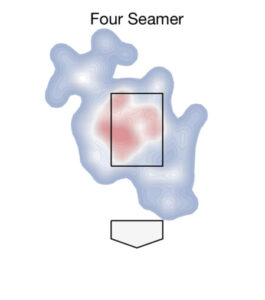
Baseball Savant
After pitching another season with Milwaukee in 2017, Torres has since bounced around between six different organizations, appearing in 14 major league games between 2018-19. When asked whether he’s still looking to extend his career, Torres offered an emphatic “of course” as he wants to pitch in three different decades and feels like he can be an asset for a team since he doesn’t have any pronounced splits.
While working out and gearing up for what Torres hopes would be his 11th year in the majors in 2020, he embarked on a physical test of endurance and stamina all for a great cause this offseason. In honor of his brother who joined the Marines when Carlos was in high school, Torres expressed his support for his brother and all the brave men and women in uniform by running for 24-hours straight in an effort to raise money for the Wounded Warrior Project, a charity and veterans service organization that offers a variety of programs, services and events for wounded veterans of the military actions following September 11, 2001.
With a goal of raising $100 per mile he ran, Torres exceeded that total in raising $2500 for his 24-hour run. For someone who has constantly been on the move for his entire life, it’s fitting that Torres would raise attention and money for a great cause in something he’s all too familiar with: being on the move.
I had the chance to correspond with Torres via email where he discussed playing in Japan, life as a reliever and his time in New York with the Mets.
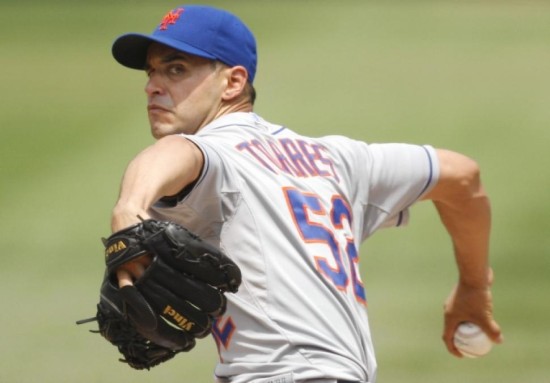
MMO: Who were some of your favorite players growing up?
Torres: To be honest, I didn’t watch much baseball as a child. The Braves were one of the few teams that were televised nationally, so I was able to watch a few of their games, but I was usually playing outside or working.
MMO: At what age did you start primarily pitching?
Torres: I was closing games and DH-ing in college, but I grew up in a different era. I played four sports in high school, so specializing in only one thing wasn’t something I was forced to do until my junior year in college. I remember one guy in my high school who wanted to focus on only pitching and nothing else. We viewed him as an odd duck and I never remember him going anywhere with it.
Specializing at an early age isn’t practical. Playing different sports and learning different positions helps encourage different aspects of athleticism that would not be learned otherwise, let alone strength and development.
MMO: You attended and pitched for several different colleges before being drafted in the 15th round of the 2004 MLB Draft. Was it difficult being on the move and switching colleges?
Torres: No, I moved a lot as a kid and I knew that I was going to use baseball as a way to get a college degree. I realized the price for that was moving and I was more than willing to pay it. Little did I know that playing baseball and being on the move was something I would be doing for most of my adult life.
MMO: You spent a season playing in Japan for Yomiuri (2011). What’s the baseball culture like in Japan? Were there any major differences in terms of preparation, training and style of play from Japan to the U.S.?
Torres: The easiest way to describe it is that in Japan, they view baseball as work, not as a sport to hone your craft. It is actually very much like Mr. Baseball, which is an oddly accurate movie.
One thing I have to mention is that the culture, in general, is different. I was there during the earthquake, tsunami, volcano eruption, and nuclear reactor meltdown and during those devastating tragedies, I never once heard about looting or people taking advantage of the circumstances. It was the exact opposite and it was amazing to witness all the phenomenal qualities that made up what I saw in Japanese culture.
In terms of baseball, things in Tokyo were drastically different. One of my Japanese teammates threw 235 pitches in his first bullpen of the spring! And that was just in a bullpen session, mind you. The weightlifting program was not very comprehensive and accommodations on the road were non-existent. Keep in mind this was one team eight years ago, so things could have changed.
The difference in baseball isn’t the work ethic; it was where they applied that standard. It was very common to see people in the batting cages for hours—not like taking their turn, but one individual hitting off the tees for the entirety of the game. Whatever they were told to do, they would do to excess. Overtraining was a very real thing, but that’s how hard they wanted to work at their craft. It was impressive to some degree.
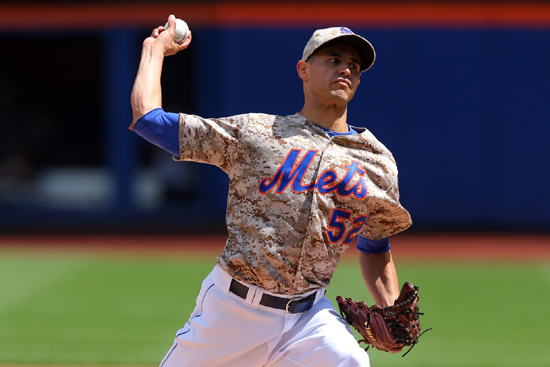
MMO: Throughout your early minor league career, the White Sox utilized you as both a starter and reliever. Did you prefer a role? And at what point in your career were you told that you’d be generally used out of the pen?
Torres: It’s funny because when I started throwing solely out of the bullpen, it was after my first year with the Mets. When I came up with the White Sox, I went from spot starting to just starting because there were not five healthy starters on the 40-man roster and they needed me to start for the rest of the year. The following year, health was not an issue so I went back into the bullpen.
I’m indifferent to starting or relieving, but it always appears that teams prefer my ability to throw every day versus once every five days. In Colorado, the Rockies used the piggyback system. The piggyback guys were Adam Ottavino, Josh Roenicke and myself. That was in 2012 and we were criticized for it.
It is interesting because now teams are praised for not spending the revenue share money by purchasing a fifth starter and instead of throwing their entire bullpen, yet at that time it was extremely taboo.
MMO: You signed a minor league deal with the Mets in the winter of 2012. In 2013, you saw your walks-per-nine drop from the prior season (4.4 to 1.8) and your ERA drop nearly two full runs (5.26 to 3.44). Were there any mechanical adjustments you made from 2012 to ’13? And what made the Mets an appealing team to sign with?
Torres: Funny, but I played the previous season in Colorado. I was a young pitcher who was still learning to adjust his stuff to the altitude and a lot of times it was a better option to make sure the curveball stayed down than to just toss one higher and watch it hit the cars in the players’ lot.
The difference was Colorado vs. anywhere else. That was also before they used the current baseball where now any park is a home run park. I was also with New York when they moved the fences in because there were very few home runs being hit.
The thing that made the Mets the team I signed with appealing was simply that Bobby Parnell and a few other players I had previously played with were on the team and I looked forward to playing with them again. When you spend almost eight months with someone, it is a perk if you already know them and what they are about.
To this day, I tell people that I don’t leave my daughter for eight months out of the year to come out, collect a paycheck and get my butt whooped. I leave her to win! Knowing Bobby’s dedication to his craft and desire to win assured me I wouldn’t be leaving my daughter to lose. If I had to play a game and my life was on the line, Parnell would be on that team.
Our coaching staff with Ricky Bones and Dan Warthen also worked tirelessly to help me and I’m very thankful for their instruction, as I’m sure all the players that pitched under them were thankful for their help. That list is long.
MMO: Your 2014 season was one of the best in your career. You were second on the Mets in appearances (73), tossed a career-high in innings (97.0) and were called upon for multiple innings out of the pen. Can you talk a little about your ’14 season and what seemed to really click for you?
Torres: In reality, a lot of factors go into a player’s ERA that doesn’t always have to do with their “stuff.” In this case, it was more of applying the instruction that I’d received over the years. I had coaches that worked endlessly and helped by teaching me to be more professional; I had teammates that played hard and made plays when I needed them, and I was also given more innings and was allowed to pitch more.
In the first two weeks of a season, relievers either have a 0.00 ERA or a 9.00, depending on how many innings they have. If you give them enough work they will settle where they should be and they can learn how adjustments play moving forward; 97 innings is a good amount of work to counter big innings that relievers sometimes give up.
Sometimes doing things for the team bites you in the butt in terms of numbers. An example is being asked to intentionally walk people on numerous occasions, then being pulled out of the game for the next reliever. Take the current minor league extra-inning rules into account; as of now the man that is just put on second base is not an earned run. Now if the team happens to successfully bunt the man to third, the home team manager might opt to load the bases. Not many people pay attention to the fact that the two intentional walks are now earned runs for the pitcher of record, not because of anything else but a decision that was made in the best interest of the team.

MMO: You got to witness some of the club’s young, premier pitching talent in Matt Harvey, Jacob deGrom, Zack Wheeler and Noah Syndergaard. Can you talk a little about getting to watch them early in their careers and what you saw from each?
Torres: It’s one of the things I enjoy most about playing baseball. I played with Zack Wheeler in the minor leagues when he was just a thrower with “stuff,” but lacked the consistency needed to be dominant and he’s now transformed into a pitcher who has signed a $100+ million deal and is going to make a team much better with him on the staff.
Watching deGrom win two Cy Young Awards and seeing the development in Syndergaard and Steven Matz is also something to applaud. That is also a testament to each player’s desire to get better, learn and hone their craft. Sometimes it is learning a new pitch and sometimes it is mechanical, but that’s what makes it such a pleasure to watch.
One thing you also need to learn to do in sports is separate the player from the man. To watch teammates grow as men is also something I’ve enjoyed over the last 15 years in professional baseball.
MMO: One of your most memorable plays with the Mets was the come-backer off the bat of Jeff Francoeur in the 10th against Philadelphia in 2015; in which the ball ricocheted off your foot and to Daniel Murphy at first. You raced to cover first and beat Francoeur. What was going on in your mind at the time of the play? And, not only did you make that play, but you also hit a leadoff single in the 13th and came around to score the go-ahead run!
Torres: I was thinking “GET THE OUT” just like I always am. I recall another random play when a line drive was hit directly off of my foot. When it popped into the air I lunged forward, grabbed it out of midair and threw it to first to double the runner off. Since the ball never hit the ground, the runner didn’t have time to tag up.
A lot of time the instant plays you make come from reflex, not reaction. We do the tedious fielding drills that bore pitchers to death, but when you see the ball fly to the right side, you have programmed the body to cover first so you can react faster than someone who has to think about it. When I realized I had successfully kicked the ball and it was heading to the right side of the field, I simply ran to cover first just like I have been programmed to do.
Very funny side note: If you ever watch that play, Daniel Murphy never looks at first base. He had no clue if I was there or not. He just did what good defenders do and that was giving you a chance to make a play. Thanks to that reaction we made that play because if he had looked to find me or see if I was running, Francoeur would have been safe.
Another random side note was that after I got that hit and was subsequently moved to second, there was a chance to advance to third on a ball hit to Francoeur. I remember as I was tagging up and getting ready to run, I stopped a few strides from second because I remembered it was Francoeur and realized I would be thrown out by no less than 30 feet. I was not wrong and I was immediately thankful for thinking before I cost the team a chance to win.
MMO: I read that you were considered one of the fastest players on the Mets. How much did you incorporate running and or speed workouts into your regimen?
Torres: I’ve always been able to run. And yes, I am fast, but my endurance and ability to change direction is a much greater asset. My ability to plant my foot, change direction and accelerate is more of what people are talking about. Pitchers have many more skills and abilities than they are given credit for— not all pitchers, of course, but most.
MMO: What did you like most about playing in New York?
Torres: In terms of the city itself, I enjoyed the convenience of everything. One of my favorite restaurants is there called Gyu-Kaku; I rode the train every day to and from the field; and if you wanted or needed anything, it was only a couple of blocks away.
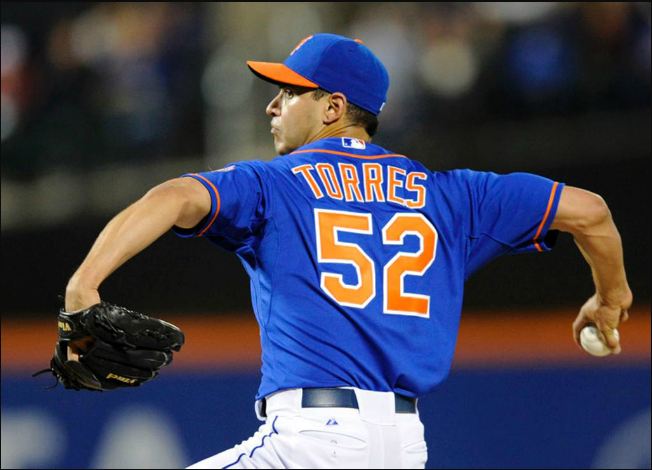
MMO: Can you talk a little about the work you would put in both on and off the field in order to be ready to make an appearance on any given night?
Torres: About eight years ago, a friend outside of baseball asked me what time I head to the field. He suggested 5:30 or 6 pm for a 7 pm game. I just had to laugh. People don’t realize that we actually play every day. We play so many games in a row that we essentially “practice” before we play the games. We have to throw, work on pitches or mechanics, take batting practice, condition, and, from time to time, work on fielding before the game. And that’s just on field. Before all of that, we have to activate [essentially warm up], get treatment, watch film, have our pitchers’ meeting and get ready for the game.
During the game, you should always look at information you need to see or like to see. For example, if you have a sinker, you might ask for a chart that shows a heat map of how often they hit sinkers with movement similar to yours in the ground. Then you will review those charts on the guys playing that day and in spots you see yourself coming in.
When your role gets close, you will need to activate, loosen up, warm up and then wait for the call to see if you are going in.
MMO: After a down year in 2015, you bounced back with career bests in ERA (2.73), ERA+ (156), H/9 (7.1) & bWAR (2.2) in 2016 with the Milwaukee Brewers. Were there any reasons you could think back on for your big turnaround in ’16?
Torres: There are always things that happen during a season that people either forget or that people don’t know, so just remember that not everything is black and white when it comes to evaluation. There are always things that can be said about a year that are positive or negative and things that make complete sense when you hear it. But sometimes people just don’t care.
So, I’ll throw this out there: In 2015 we went to the World Series. I would take a “down year” every year if it means we go to the World Series every year.
With that being said I did enjoy throwing to Martin Maldonado and my teammates did help me out a lot in the success of 2016. The only negative is where we finished in the standings.
MMO: Are you planning on pitching in 2020?
Torres: Of course. I want to pitch in three different decades and more importantly, my limited use in the last two years has extended the life of my arm. Everyone has always been baffled when they learn my age and associate it with the man they see in front of them. My health, shape and durability speak for themselves, but I’m still looking to win a World Series.
I’m hoping more teams want to win in the future and look to me to help them. Especially with the new rules changes and my ability to get lefties out, I feel like I have a lot to offer.
Follow Carlos Torres on Twitter and Instagram: @CarlosOGTorres





